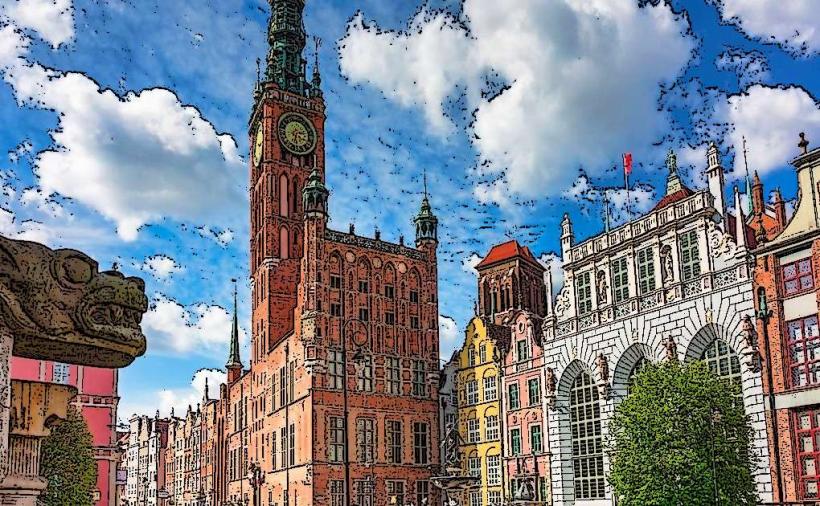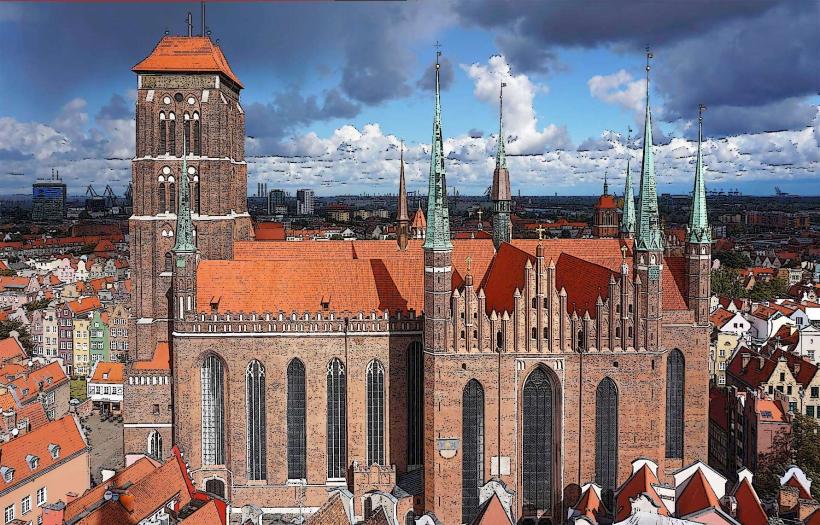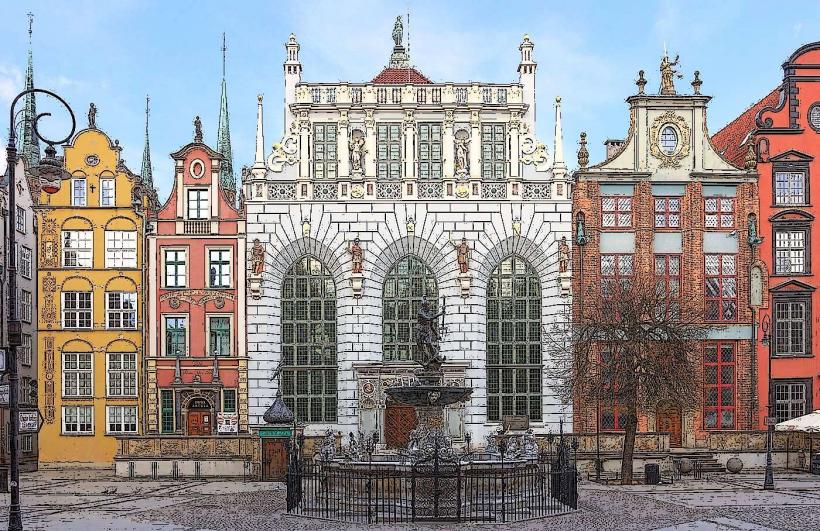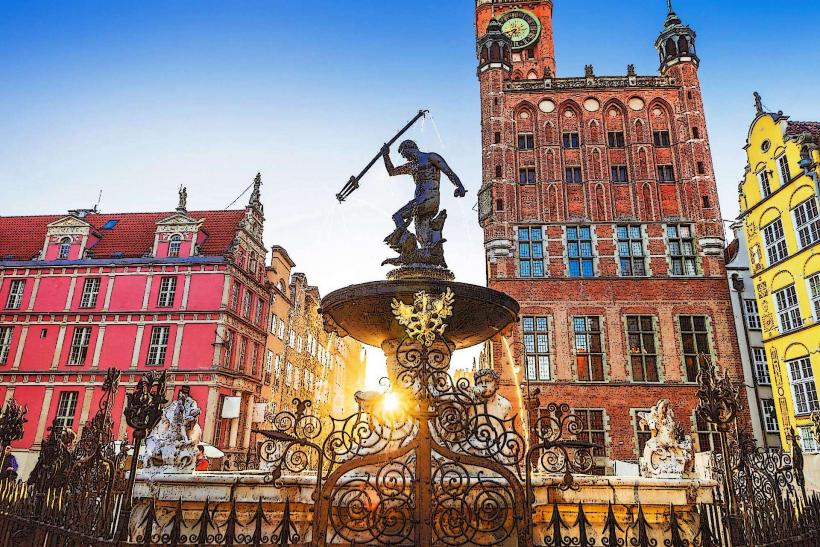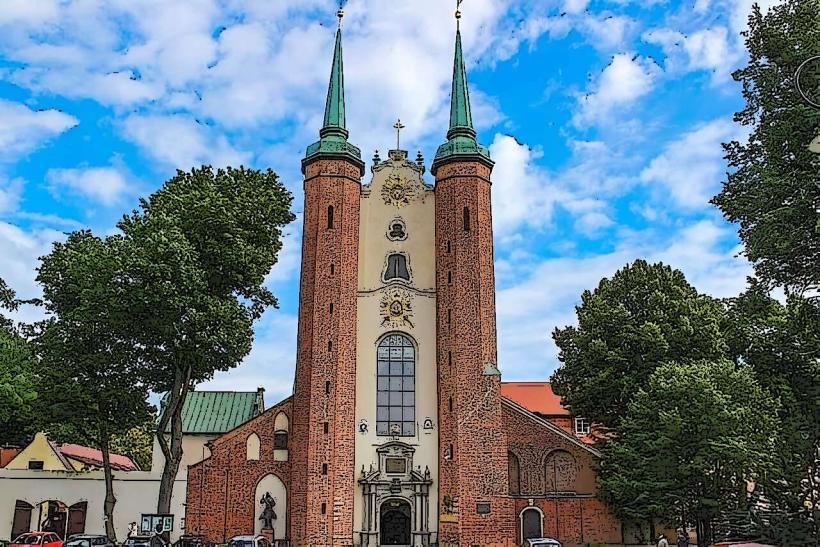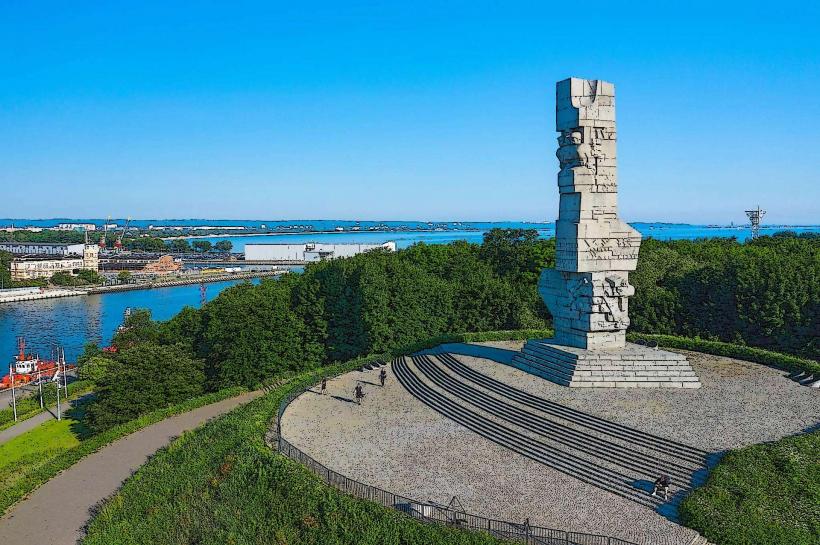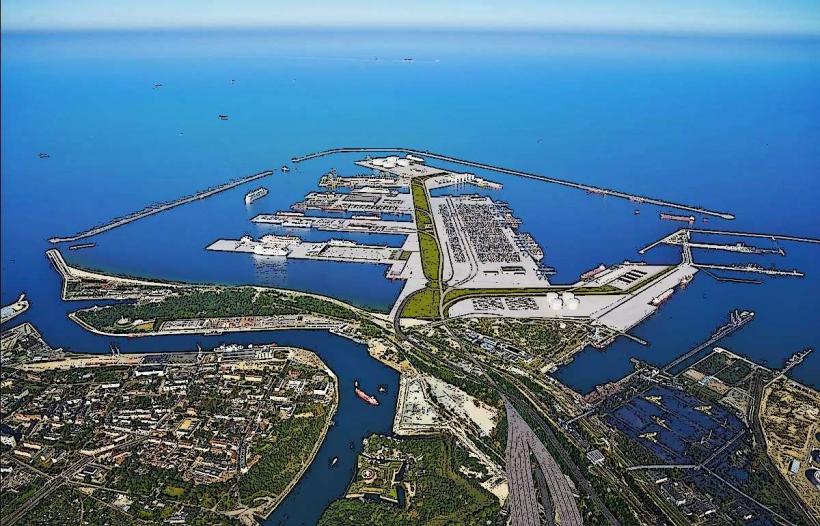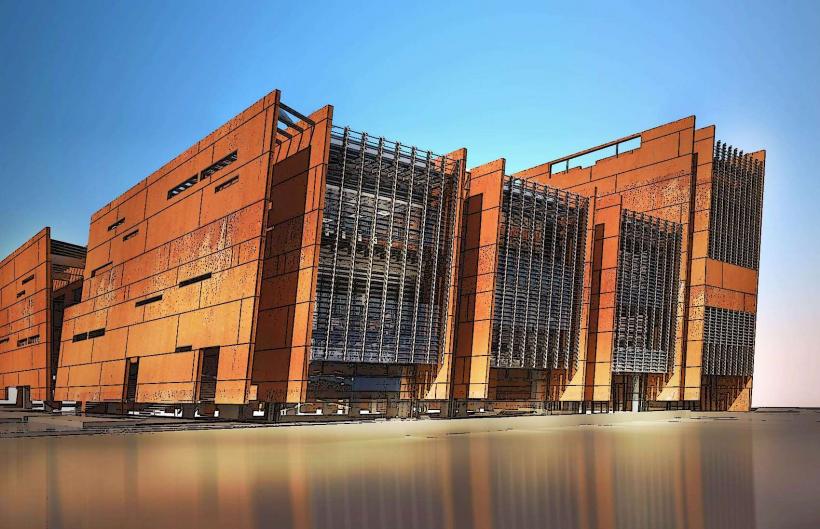Information
Landmark: Gdańsk CraneCity: Gdansk
Country: Poland
Continent: Europe
Gdańsk Crane, Gdansk, Poland, Europe
The Gdańsk Crane (Polish: Żuraw Gdański) is one of the most recognizable landmarks in Gdańsk, Poland, and an important symbol of the city's maritime heritage. Located on the Motława River, it is a medieval structure that originally served as a port crane used for loading and unloading cargo from ships, as well as for raising and lowering heavy cargo and ship masts.
History and Significance
Medieval Origins: The Gdańsk Crane was first constructed in the 14th century, around 1360, during the reign of the Teutonic Knights, who ruled over the region. The crane was part of the city's efforts to develop its port and increase its trade in the Baltic Sea. The crane became a key piece of infrastructure in the city’s harbor, allowing the efficient movement of goods from ships to land.
Construction and Design: The crane was designed as a towering structure with a wooden mechanism that used sails and a windlass to raise and lower heavy loads. It was built with a distinctive brick Gothic architecture and features two large wooden wheels that powered the lifting mechanism. The crane’s distinctive gable roof and wooden gears make it one of the most unique and visually striking structures in Gdańsk.
Role in Gdańsk's Maritime History: The Gdańsk Crane played a vital role in the city’s development as a major port and trade center in the Middle Ages and Renaissance periods. At its height, it was capable of lifting up to two tons of cargo, which was significant at the time. It also served a symbolic role, representing the city’s prosperity and maritime strength. Gdańsk was a major hub for merchant shipping in the Baltic Sea, and the crane’s presence in the harbor emphasized this strategic position.
Functionality and Use
Port Crane: The primary function of the Gdańsk Crane was to serve as a mechanical hoist for lifting and moving cargo, such as timber, grain, and other goods. It was also used for loading cannonballs and other heavy items onto ships.
Raising and Lowering Masts: In addition to cargo, the crane was used to help raise and lower the masts of ships, making it an important part of the city's shipbuilding and naval infrastructure. The use of sails and wind power meant that the crane could lift very heavy loads, helping to facilitate the busy maritime trade.
Symbol of Power: The crane also had a symbolic role in representing the strength and prosperity of Gdańsk’s shipping industry. Its tall, prominent structure stood as a visible sign of the city’s wealth, maritime prowess, and connection to global trade routes.
Architecture and Design
Gothic Brick Construction: The Gdańsk Crane is a notable example of Gothic brick architecture, which is a distinctive feature of many buildings in Gdańsk. The crane’s structure consists of two towers, one of which housed the windlass (the lifting mechanism), while the other provided the necessary space for the cargo to be raised or lowered. The wooden wheels used in the crane were an essential feature, powered by human labor or the force of the wind.
Distinctive Roof: The crane features a characteristic gable roof that slopes steeply on either side, making it easily recognizable. The roof adds to the striking silhouette of the crane, especially when seen from the Motława River.
Height and Position: The crane stands around 25 meters tall and is positioned right along the water’s edge, allowing it to perform its function with maximum efficiency. Its height and placement on the riverfront make it one of the most prominent buildings in the Gdańsk Old Town.
Restoration and Current Use
Destruction and Reconstruction: Like many buildings in Gdańsk, the Gdańsk Crane suffered significant damage during World War II. The crane was severely damaged in 1945 during the bombing of the city but was later rebuilt in the 1950s. Today, it is fully restored and continues to stand as one of the most important historical structures in Gdańsk.
Museum: The Gdańsk Crane is now part of the National Maritime Museum in Gdańsk, which includes exhibits related to the city’s history as a maritime power. Visitors to the crane can learn about its original purpose, how it was used in the city's port operations, and its role in Gdańsk's maritime history. The museum offers an in-depth look at the crane's mechanics, as well as Gdańsk's broader relationship with the sea and trade.
Tourist Attraction: The Gdańsk Crane is a popular tourist attraction and a key part of the Gdańsk waterfront, offering stunning views of the Motława River and the city’s historic architecture. It is an iconic symbol of the city and serves as an important cultural and historical landmark.
Cultural and Symbolic Importance
Icon of Gdańsk: The Gdańsk Crane is one of the most recognizable symbols of the city and is often used in representations of Gdańsk in media and tourism materials. It is featured in numerous postcards, photographs, and promotional campaigns for the city.
Maritime Heritage: As a key part of Gdańsk’s maritime heritage, the crane symbolizes the city’s longstanding importance as a trading and shipbuilding center. It reflects the city’s connection to the Baltic Sea, which has been central to its development for centuries.
Architectural Icon: The crane is also an important architectural and engineering feat, representing medieval and Renaissance-era technology. Its unique design and the way it combines both functionality and aesthetic appeal make it a standout piece in the city’s historical landscape.
Visiting the Gdańsk Crane
The Gdańsk Crane is located along the Motława River in the heart of the Gdańsk Old Town, easily accessible to visitors. The crane is part of the National Maritime Museum, where tourists can explore exhibits related to Gdańsk's maritime history, the development of shipping technology, and the city’s role in European trade. Visitors can climb to the top of the crane for panoramic views of the surrounding city and the river.
In addition to its historical significance, the crane is situated in an area that is rich in other historical landmarks, making it a central stop for those exploring the architectural and cultural heritage of Gdańsk.
Conclusion
The Gdańsk Crane is a historic and iconic structure that symbolizes Gdańsk’s rich maritime past. Originally serving as a vital port crane, it played a central role in the development of the city’s economy and its status as a major trading hub in the Baltic Sea. Today, it stands as an important cultural landmark, offering visitors insight into the history of Gdańsk and its connection to the sea. Whether for its striking architecture, its role in the city’s past, or its cultural significance, the Gdańsk Crane remains one of Poland’s most important historical monuments.

